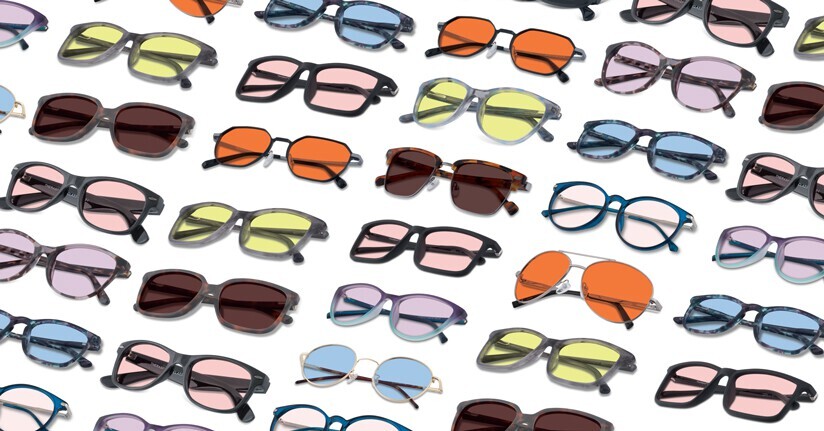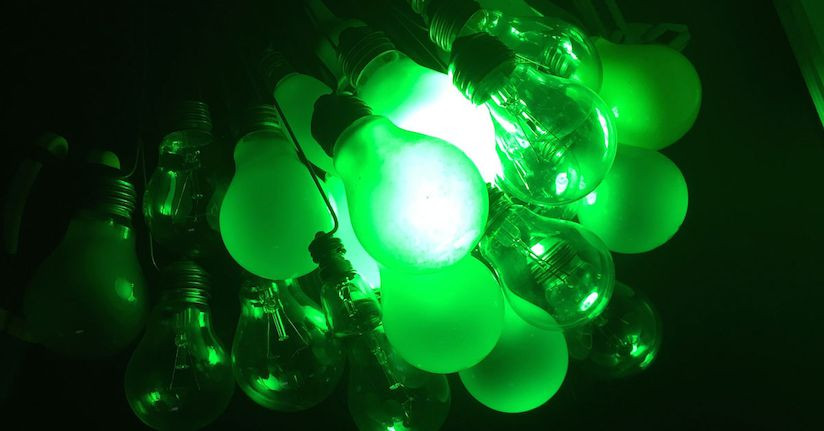Does green light provide migraine relief?
We’re excited to see recent research investigating the role that light plays in migraine. We know a lot about light that’s most painful for people with photophobia and migraine—that’s the research that we used to create TheraSpecs—but this new study is the first to look at which light is the least painful. The research is in the early stages and it was a small study, but the results are promising.
Media coverage has focused on one piece of the study, which is that a narrow band of green light might reduce migraine pain for some people. What researchers found specifically is that the narrow band of green light they studied “exacerbates migraine headache significantly less than exposure to white, blue, amber or red lights in patients with normal eyesight.” The study also confirms prior research findings that blue light causes the most photophobia.
Researchers were surprised to discover that a low brightness of green light reduced pain by approximately 15% in 20% of the 41 study’s participants. However, one of the researchers, Harvard professor Rami Burstein, PhD, said that “the findings were personal. Not all patients found green light to be the least painful.”
To conduct the study, researchers put participants in a dim room and turned on specific colors of light one at a time. They slowly increased the brightness of the lights, then measured participants’ brain activity. Participants also reported their perceptions of different colors of light. For most people, every color of light increased their discomfort some. The brighter the light, the greater the discomfort (which is consistent with previous research). Of the five colors tested, a narrow band of green light was the least problematic. At low brightness, about 20% of participants reported that this light reduced their migraine pain.
Articles have reported that sunglasses that let in only this green light could provide pain relief for people with migraine. While future research may eventually lead to further refining which colors of light are best to filter for migraine and photophobia, this one study doesn’t have enough information to make such a leap. Based on the current study’s findings, lenses would have to be so dark you could barely see through them. This would cause dark adaptation, which ultimately increases sensitivity to light. Furthermore, some of the pulsing in fluorescent lights happens in the spectrum this study found beneficial. If you’re sensitive to fluorescent lights, you’ll be better off with other colors of light than the pulsing green in this band.
For now, research shows that filtering the worst wavelengths of light is the most practical and helpful way for managing migraine and photophobia. If future research supports the finding that some colors of light can actually reduce pain, we at TheraSpecs would adapt our technology to build an even better lens. Currently, though, our existing lens provides an excellent real-world solution for light sensitivity.
REFERENCES
Noseda, R., Bernstein, C. A., Nir, R. R., Lee, A. J., Fulton, A. B., Bertisch, S. M., ... & Doran, B. L. (2016). Migraine photophobia originating in cone-driven retinal pathways. Brain, aww119.
Luntz, Stephen. "Green Light Could Help With Migraines." IFL Science. 20 May 2016. Accessed on May 22, 2016 at http://www.iflscience.com/health-and-medicine/gre...

TheraSpecs® Glasses for Light Sensitivity
Find the glasses that fit your needs and lifestyle, and stay protected from screens, fluorescents, unwanted blue light, sunlight, flashing lights, and more.
Shop Now




